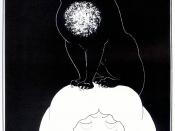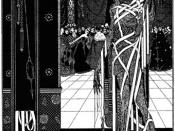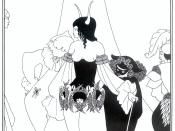Analyzing Single Effect
"Hop-Frog"
Edgar Allan Poe believed that a short story should be written to create a single effect. He believed that every detail or incident of the story should contribute to the effect. The overall effect of "Hop-Frog" is the theme of revenge that is seen throughout the story. There are certain details and situations in the story that add to creating this effect.
At the beginning of the story, Poe shows us how Hop-Frog has been mistreated by the king just to get a laugh, and how the poor dwarf just puts up with it, again and again. He does this when he forces Hop-Frog to drink wine, even though it makes him almost mad. However, Hop-Frog gets his idea for his own "jest" for the masquerade party. He explains every detail of his plan to dress the king and his advisors up as the Eight Chained Ourang-Outangs.
When the part about covering the men with tar is mentioned, the reader may become suspicious, as this seems a little bit strange. However, the king is none the wiser, and so the men are all outfitted in their costumes. Hop-Frog has planned everything carefully, but no one has suspected anything, which is probably the way Poe planned it. At the masquerade, Hop-Frog appears behind the group of men after pushing them towards the middle of the room and puts his fateful plan into action. Upon setting the men on fire, he has sought his revenge.
Poe develops the themes of revenge and evil throughout the story by setting the stage for a character whom has been mistreated and may just snap and seek their revenge. It becomes obvious that Hop-Frog is this character as Poe describes the king repeatedly making jokes with him...


